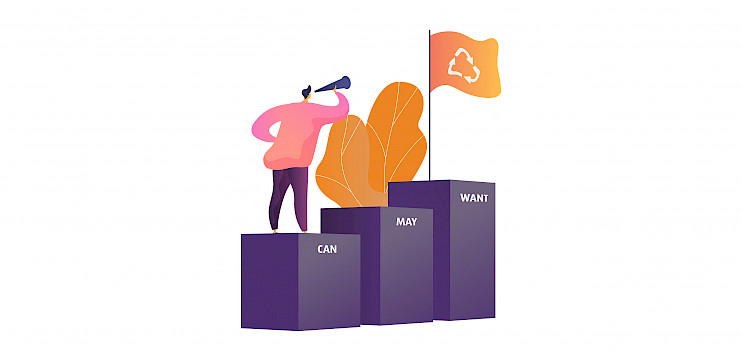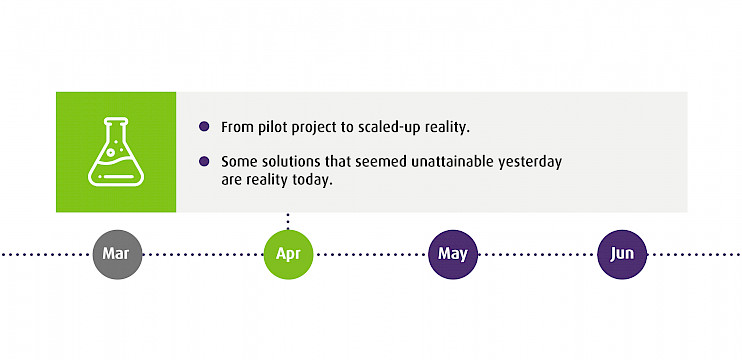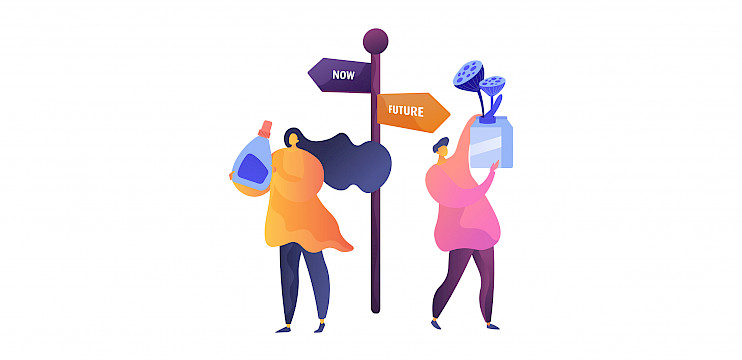Comment pouvons-nous vous aider?
Nos experts sont prêts pour vous.
Last month, we kicked off our trilogy with the three pillars needed for a circular flow: What’s possible? What’s allowed? And what are we willing to do? Three elements that must align to make a product, packaging, industry, or even an entire market truly circular. This month, we’re taking a closer look at the first pillar: what is actually possible?

Technology as the foundation
“What’s possible” is about technical feasibility. No matter how great the ambition or motivation—if something is (still) not technically feasible, good intentions are where it ends. That’s why it’s essential to have insight into what’s technically possible today and where innovations are creating new opportunities. That insight starts as early as the packaging design phase. Can the material be thinner? Is a more flexible option available? Are there recyclable films suited for this application? These are crucial questions that can make a real difference during design.

Innovation on the move
This area is developing rapidly. Solutions that seemed unfeasible yesterday may already be a reality today. With the PPWR wind at our backs, many developments have accelerated. More and more mono-materials are becoming available that offer the same functionality as layered, mixed materials. This makes it easier to design packaging that fits into existing recycling streams. And in the waste phase, big strides are being made. Sorting facilities are getting smarter—often supported by AI—and can now identify and separate materials into usable streams with increasing precision.
And what about the things that aren’t possible yet?
We’d like to emphasize something here. The Netherlands is home to an impressive community of researchers, students, and engineers who are passionately committed to better, circular solutions. On tech campuses and in universities, they work every day on methods and technologies that may seem impossible today—but could suddenly work tomorrow in a test setup. Eureka!
And on a personal note: we are genuinely impressed by the level and dedication of these individuals. They mean business and form a silent army working, often out of sight, on real solutions that can make a difference. They deserve recognition.
Fortunately, they are being recognized—supported by visionaries and drivers of innovation from the industry. And despite what you may hear, there’s still funding available for sustainability: through government programs, grants, and targeted innovation projects. This helps move ideas from the lab to real-world applications. From pilot to scaled-up reality.
That’s something to be proud of. And it gives us hope: what isn’t possible today, might very well be tomorrow—thanks to those building the future.
Making decisions in a shifting landscape
Even so, it’s not always easy for brand owners or packaging managers to make the right calls. The relevance of an innovation often depends on your time horizon. Are you looking for a solution to implement right now? Or are you planning a new packaging line or machine that needs to adapt to future developments? Just because something is technically feasible doesn’t mean it’s the right choice—or applicable to your situation today.
Moving forward together
At our info sessions, we sometimes say with a wink: of course, you’re free to become an expert in all this yourself. But you could also partner with a team that does this every day and can help guide you toward smart, future-proof choices. We’ll let you guess who that might be.

Next edition: What’s allowed?
In our next newsletter, we’ll explore the second pillar: what’s allowed?
We’ll dive into the laws and regulations that guide the choices producers can and must make. Because even if something is technically possible, that doesn’t mean it’s permitted. And the reverse is true as well: what’s allowed, isn’t always feasible.
Nos experts sont prêts pour vous.